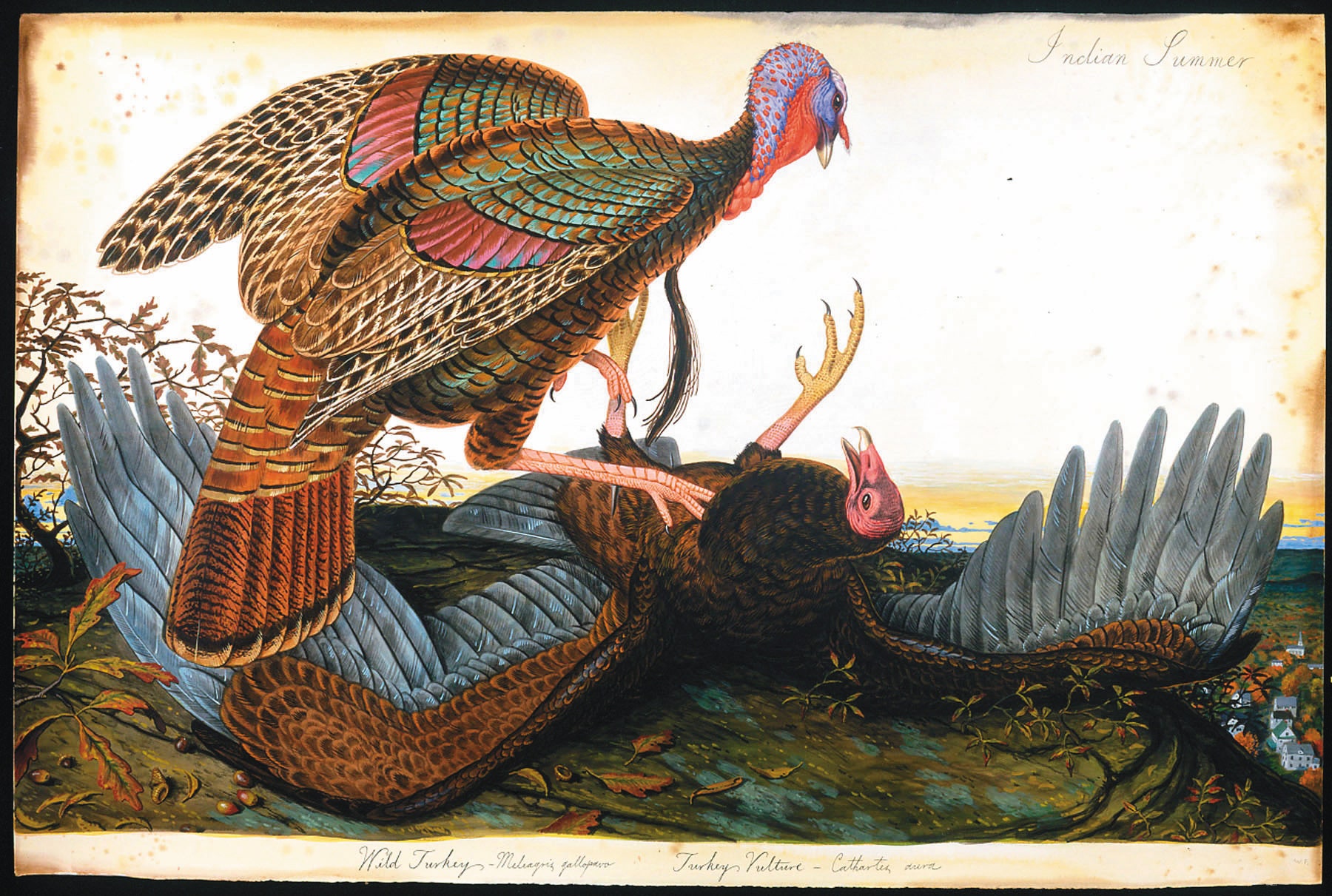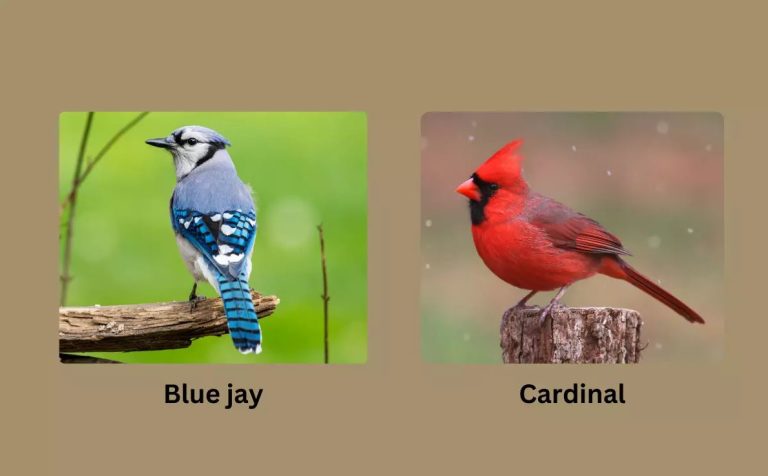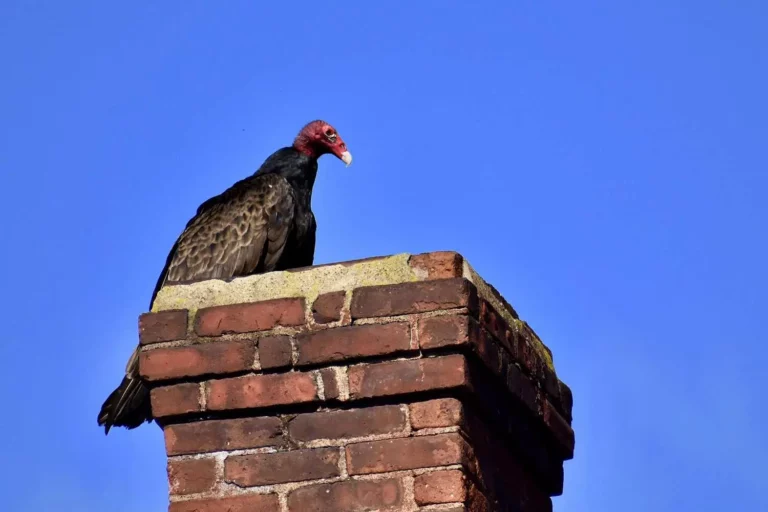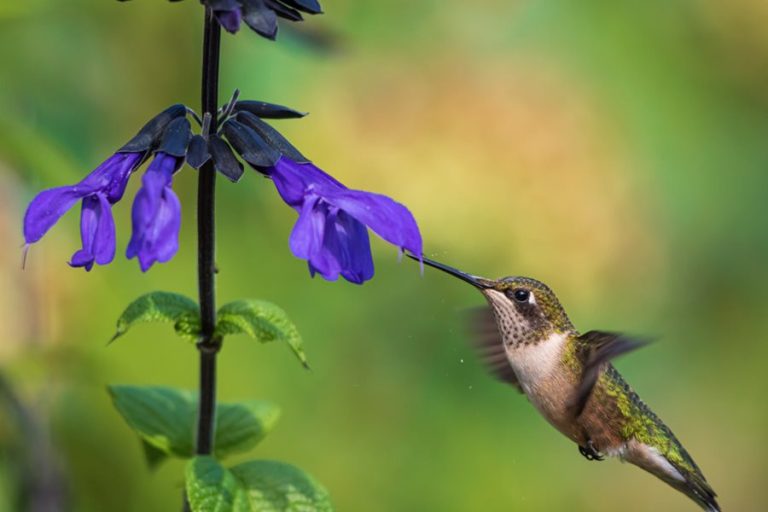Discover the Art of Identifying Turkey Feathers
Identifying turkey feathers can be done by looking at their shape, color, and texture. To do this, examine the feather’s barbs and see if they have hooks or notches, which is a characteristic of turkey feathers.
Turkey feathers display a range of colors, from iridescent copper and bronze to rich browns and blacks. The texture of turkey feathers is also unique and can be noticeable when running your fingers along the feather’s surface. By following these tips, you will be able to accurately identify turkey feathers.
Whether you are a birdwatcher, wildlife enthusiast, or hunter, understanding the characteristics of turkey feathers can serve as a useful tool in identifying and appreciating these magnificent birds.
Credit: www.americanhunter.org
Understanding The Importance Of Turkey Feathers In The Hunting World
Turkey hunting is the second most popular type of hunting in north america. Although it may seem like a pretty straightforward sport, there are several elements that hunters need to consider to ensure a successful hunt. One of these crucial elements is identifying the type of turkey feather.
In this section, we’ll take a closer look at the importance of turkey feathers in the hunting world and discuss their anatomy, plumes, and how they impact flight and behavior.
Why Turkey Feathers Are Important For Hunting
Turkey feathers serve as essential tools for turkey hunting. Turkeys have evolved with a set of elaborate feathers that play a crucial role in their daily lives. Here are a few reasons why turkey feathers are essential for hunting:
- Concealment: Turkeys use their feathers to camouflage themselves and blend into the environment. Hunters can use this to their advantage by studying the feather patterns and choosing the right decoys for hunting.
- Flawless flight: Turkey feathers also help in providing lift and steering capabilities, which help the turkeys to take off when their lives are at risk.
- Determining gender: The size, shape, and color of the feathers make it possible for hunters to determine the gender of a turkey from a distance.
The Anatomy Of A Turkey Feather
Turkey feathers have a complex and unique structure that provides them their rich colors and helps them with flight and control. The following are their critical components:
- Quill: The tapered end of the feather that allows it to remain embedded in the turkey’s skin.
- Shaft: The central portion of the feather that holds the vane and flue together.
- Vane: The flat sides of the feather made up of numerous individual segments called barbs, which interlock with one another on either side of the shaft.
- Flue: The part of the feather between the shaft and vane that forms the feather’s aerodynamic structure.
How Bird Plumage Affects Flight And Behavior
In the wild, bird plumage plays a crucial role in determining their behavior and flights, and turkeys are no exception. Some of the ways the plumage affects their behavior includes:
- Attracting a mate: Turkeys use their plumage to attract a mate by displaying the colors of their feathers. Males, for instance, have uniquely bright and colorful feathers that act as courtship displays for females.
- Flight and escape: Plumage helps turkeys in a situation when they are in flight or attempting to escape from predators. The feathers’ design and structure allow them to use their wings effectively, making them agile and fast.
Understanding the importance of turkey feathers in the hunting world is a crucial aspect that hunters need to master. By studying the feathers’ patterns, structure, plumes, and impact on flight and behavior hunters can have greater success rate in hunting.
Identifying The Types Of Turkey Feathers
Turkey feathers are unique, with each type serving a crucial function for the bird. Identifying the different types of turkey feathers can be a fun and engaging activity for nature enthusiasts. In this guide, we will explore the four main types of turkey feathers and provide tips and tricks to help you identify them with ease.
Primary Feathers: Definition And Identification
Primary feathers are located on the bird’s wings, and they are responsible for providing lift, balance, and propulsion during flight. They are the longest and strongest feathers on the turkey’s body, and they are essential for flying long distances. To identify primary feathers, look for the following characteristics:
- Length: Primary feathers are the longest feathers on the bird’s wing, stretching from the wrist to the tip of the wing.
- Shape: Primary feathers are narrow and pointed, with a slightly curved shape at the end.
- Color: The color of primary feathers varies depending on the species, but they are usually darker than other feathers on the turkey’s body.
Secondary Feathers: Definition And Identification
Secondary feathers are located on the wings and are responsible for providing lift and stability during flight. They are shorter than primary feathers but are still an essential component of the turkey’s flight capabilities. To identify secondary feathers, look for the following characteristics:
- Length: Secondary feathers are shorter than primary feathers and are located behind them.
- Shape: Secondary feathers are broader and rounder than primary feathers, with a slightly curved shape at the end.
- Color: The color of secondary feathers is usually lighter than primary feathers, but the exact shade varies depending on the species.
Tail Feathers: Definition And Identification
Tail feathers are located at the end of the bird’s tail and are used for steering and balance during flight. They also play a role in courtship displays, where male turkeys fan out their tail feathers to attract females. To identify tail feathers, look for the following characteristics:
- Length: Tail feathers are usually longer than other feathers on the turkey’s body and are located at the end of the tail.
- Shape: Tail feathers are flat and fan-shaped, with a slightly curved shape at the end.
- Color: The color of tail feathers varies depending on the species, but they are usually dark and vibrant.
Body Feathers: Definition And Identification
Body feathers are located on the turkey’s body and provide insulation and protection from the environment. They come in various shapes and sizes and serve a crucial function in regulating the turkey’s body temperature. To identify body feathers, look for the following characteristics:
- Length: Body feathers vary in length, with shorter feathers located on the head and neck and longer feathers on the back and chest.
- Shape: Body feathers are broader and rounder than primary and secondary feathers, with a softer texture.
- Color: The color of body feathers also varies depending on the species, with some birds having darker feathers than others.
Identifying turkey feathers can be a fun and educational experience, especially for those interested in birds and their natural habitat. By using these tips and tricks, you can easily distinguish the four main types of turkey feathers and gain a deeper appreciation for these fascinating creatures.
Analyzing Turkey Feather Coloration And Patterns
Turkey feathers are not just beautiful but also serve a variety of purposes. Whether you are a novice bird watcher, an experienced turkey hunter, or a nature enthusiast, it is important to understand the intricate details of turkey feathers. Analyzing their coloration and patterns can provide valuable insights to experts in relevant fields.
In this section, we will discuss the role of pigmentation in feather coloration, the phenomena of albinism and melanism in turkey feathers, and the meaning behind turkey feather patterns. Lastly, we will highlight some hunting strategies that use feather coloration effectively for a successful hunt.
The Role Of Pigmentation In Feather Coloration
The color of the feathers is determined by pigmentation, more specifically, three pigments- melanin, carotenoids, and porphyrins. The distribution and concentration of these pigments affect the bird’s ability to survive in its environment, attract a mate, and even provide visual cues to identify its own species.
The color of the feathers can also change throughout the year with molting and breeding cycles. Here are a few key points to keep in mind about the role of pigmentation in feather coloration:
- Melanin: This pigment ranges from black to brown to gray and is responsible for the dark color tones of the feathers. It provides protection from uv rays and can provide camouflage, allowing the bird to blend in with its surroundings.
- Carotenoids: Found in fruits and vegetables, these pigments provide vibrant colors such as orange, red, and yellow to feathers. These colors can provide important visual cues for attracting a mate.
- Porphyrins: These pigments create a wide range of colors such as pink, green, and brown. They can provide an iridescent or shiny effect on feathers, adding to their beauty.
Albinism And Melanism In Turkey Feathers
Sometimes, turkeys can develop unique feather patterns due to genetic mutations. Albinism, a lack of melanin production, results in white feathers while melanism causes an excess of melanin, which results in black feathers. Here are a few key points to keep in mind about albinism and melanism in turkey feathers:
- Albinism: It’s a rare occurrence and results in low visibility for a bird in the wild. Turkey’s with albinism will have pure white feathers with pink legs and red eyes.
- Melanism: It occurs more frequently in turkeys and is a recessive trait. A bird with melanism will have black feathers that can provide better camouflage in some environments, but it can also make them more visible in others.
The Meaning Behind Turkey Feather Patterns
Turkey feather patterns can provide insight into the turkey’s behavior, age, and gender. Every feather has a unique purpose and understanding their patterns can help hunters and researchers identify turkeys. Here are some key points to keep in mind about the meaning behind turkey feather patterns:
- Primary feathers: The primary feathers, or flight feathers, are the longest feathers on a turkey’s wings and help provide lift and stability during flight. These feathers tend to have brown or black bars, which can help identify gender.
- Secondary feathers: These feathers are shorter and are located towards the wing’s back. They can have patterns ranging from solid colors to bars. Females tend to have lighter feathers with more bars, and males have darker feathers with fewer bars.
- Body feathers: The body feathers provide insulation, allowing the turkey to regulate its body temperature. The feathers’ patterns and colors on a turkey’s body can indicate the bird’s health and nutrition.
Using Feather Coloration For Hunting Strategies
Turkey hunting is a popular sport, and hunters use feather coloration to identify and track turkeys. Understanding the colors and patterns of turkey feathers can provide a more successful hunting strategy. Here are a few key points to keep in mind about using feather coloration for hunting strategies:
- Look for a turkey’s primary feathers’ color: Male turkeys have black bars on their primary feathers, and females have brown bars on them.
- Look for secondary feathers color: The male turkey has fewer bars on their secondary feathers, while the female turkey has more bars on their secondary feathers.
- Pay attention to body feathers: If a turkey’s body feathers are in good condition, with no dullness or damage, it’s more likely to be a healthy bird.
Understanding the intricacies of turkey feather coloration and patterns can help birdwatchers, hunters, and researchers identify these fascinating birds. Whether you are observing turkey feathers up close or admiring them from afar, you can appreciate their intricate beauty and the valuable insights they offer.
Tips And Techniques For Identifying Turkey Feathers
Field Identification Of Turkey Feathers
Identifying turkey feathers in the wild can be challenging, but with the right techniques, it can be a fun and rewarding experience. Below are some tips to help identify turkey feathers in the field:
- Look at the shape and size of the feather. Turkey feathers are generally large and symmetrical, with a distinct fan shape.
- Note the coloration. Male turkeys, or toms, have iridescent feathers in shades of brown, bronze, and green. Female turkeys, or hens, have more muted feathers with shades of brown and gray.
- Consider the location where the feather was found as this can provide clues to the type of turkey.
- Observe the texture of the feather. Turkey feathers have a smooth and glossy appearance.
Using A Feather Atlas For Turkey Feather Identification
A feather atlas can be a valuable resource for identifying turkey feathers. These atlases typically include detailed illustrations, photographs, and descriptions of various types of feathers. Here are some tips to help make the most out of a feather atlas:
- Look for a feather atlas that includes a broad range of turkey feather types and variations.
- Study the diagrams and illustrations in the atlas carefully to understand key features of turkey feathers.
- Make sure to compare the feather found in the field with those pictured in the atlas to identify similarities and differences accurately.
Turkey Feather Identification Workshops And Courses
Attending a workshop or formal course on turkey feather identification is a great way to learn in-depth knowledge directly from experts. Below are some key points to consider when selecting a workshop or course on turkey feather identification:
- Look for a well-recognized course or workshop that covers a broad range of topics related to turkey feather identification.
- Consider the qualifications of the instructors of the workshop or course.
- Make sure the curriculum includes hands-on practice in identifying turkey feathers.
In-Depth Analysis Of Turkey Feathers For Research
For researchers, analyzing turkey feathers in-depth is essential to understand various aspects of these birds, including migration patterns, habitat use, and diet selection. Here are some critical points to remember when conducting an in-depth analysis of turkey feathers for research:
- Collect the feathers according to the standard protocols and ethical guidelines to ensure the data collected is robust and reliable.
- Appropriate tools, such as microscopes and chemical analysis, will be needed to undertake a detailed analysis of the feathers.
- Consider the type of research questions that you wish to answer to select the most appropriate analysis method.
These tips, techniques, and resources are the best means to identify turkey feathers accurately. Whether you are an independent enthusiast trying to identify feathers in the field or a researcher studying turkey ecology, turkey feather identification is an exciting and worthwhile endeavor.
Caring For And Preserving Turkey Feathers
How To Care For And Preserve Turkey Feathers Safely
Turkey feathers can be used for a variety of purposes, such as for decorative purposes or to create unique diy crafts. But before you dive into using turkey feathers, it is essential to know how to care for and preserve them correctly.
Follow these tips to ensure that your turkey feathers stay in excellent condition for a long time.
Cleaning And Storing Turkey Feathers Safely
Cleaning and storing turkey feathers securely are crucial to preserving their quality. Here are some tips:
- Start by removing any dirt or debris from the feathers by gently shaking them.
- Use a soft-bristled brush to remove any remaining debris.
- Soak the feathers in a mixture of warm water and mild soap for 30 minutes.
- Rinse the feathers thoroughly with clean water.
- Gently shake the feathers to remove any excess water.
- Allow the feathers to air-dry on a clean towel.
- Once the feathers are dry, store them in a cool, dry place, away from direct sunlight.
Tips For Preserving Turkey Feathers For Decorative Purposes
Preserving turkey feathers for decorative purposes requires some extra care. Here are some tips:
- Avoid using turkey feathers in areas with high humidity.
- To prevent fading, avoid displaying feathers in direct sunlight.
- Use a soft brush to dust the turkey feathers regularly.
- If you need to store the feathers for a long time, wrap them in acid-free paper before putting them in a box.
- Keep the bird feathers away from pets and children, as they can be a choking hazard.
Legal Considerations For Collecting Turkey Feathers
It is essential to know the legal considerations for collecting turkey feathers to avoid any legal issues. Here are some rules to keep in mind:
- Feathers from wild turkeys can be collected if you have a valid hunting license.
- If the feathers belong to a domestic turkey, you do not need a permit to collect them.
- Some feathers, such as those from endangered species, are restricted by law and cannot be collected.
By following these tips, you can keep your turkey feathers in excellent condition and avoid any legal trouble. Happy feather collecting!
Frequently Asked Questions For “How To Identify Turkey Feathers – Best Guide With Tips, Tricks, And Meaning”
How Can I Identify Turkey Feathers?
Turkey feathers have a distinctive pattern consisting of bands of light and dark. The primary and secondary feathers are dark and have a distinct band, while the other feathers have light-colored bands.
What Is The Difference Between Male And Female Turkey Feathers?
Male turkey feathers have brighter, more iridescent colors than female feathers. They also have longer feathers, especially on the tail, which are used in courtship displays.
Which Feathers On A Turkey Are The Most Valuable?
The primary feathers on the wings of a turkey are the most valuable feathers, particularly from mature birds. These feathers are used for making fly-fishing lures, arrows, and ornamental arrangements.
Can You Tell The Age Of A Turkey By Its Feathers?
The age of a turkey can be estimated by the size and length of its feathers. In general, the longer the feathers, the older the bird. However, it is not possible to determine the exact age of a turkey from its feathers alone.
What Cultural Or Spiritual Significance Do Turkey Feathers Have?
Turkey feathers have been used for centuries in native american culture for their symbolic significance. The feathers represent courage, strength, and wisdom and are often used in ceremonies and headdresses. Additionally, they are used in smudging rituals and cleansing ceremonies.
Conclusion
Now that you have read through our comprehensive guide on identifying turkey feathers, you are equipped with the knowledge and tips necessary to confidently identify the feathers of this fascinating bird. Remember, understanding the different types of feathers is important not only for birdwatching enthusiasts but also for those interested in hunting, as certain feathers can indicate the sex, age or health of a turkey.
Moreover, recognizing the symbolic meaning attached to certain feathers can enhance your appreciation of native american culture. So, next time you spot a turkey feather, take a closer look and see if you can determine which type it is. With practice, you might even become an expert in identifying turkey feathers!








